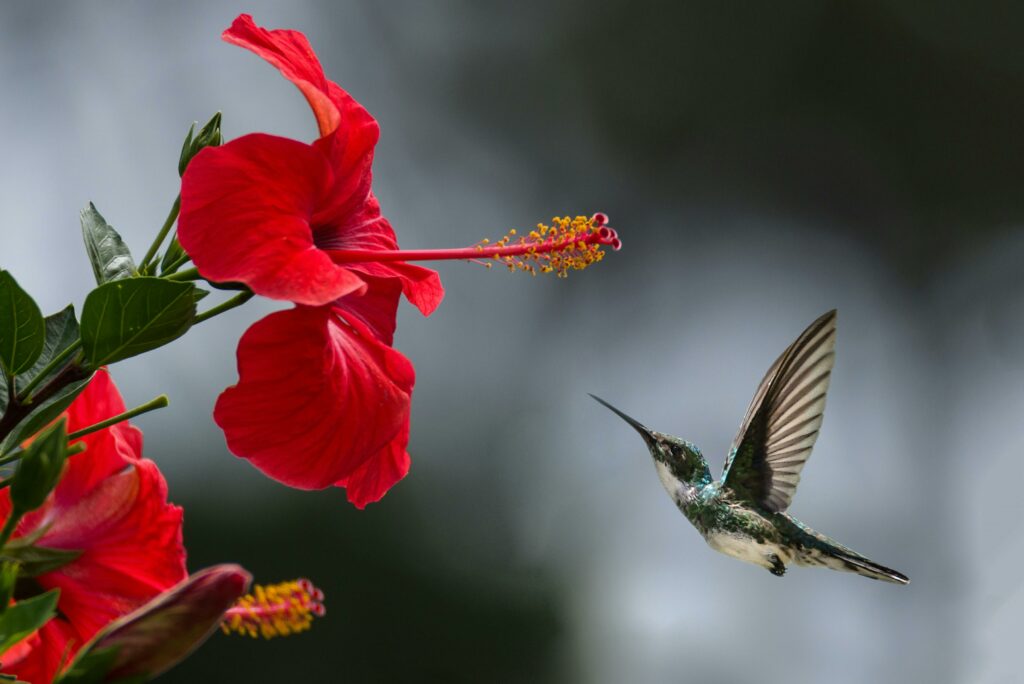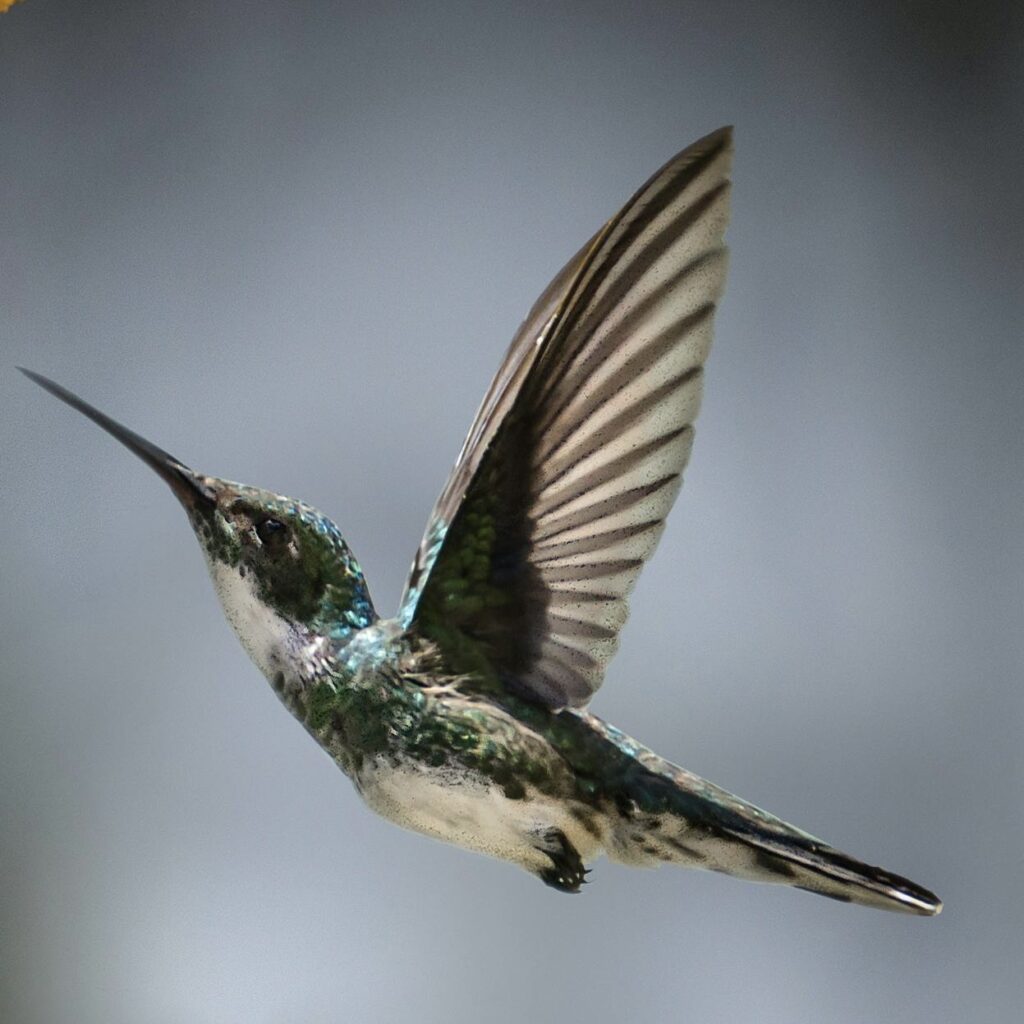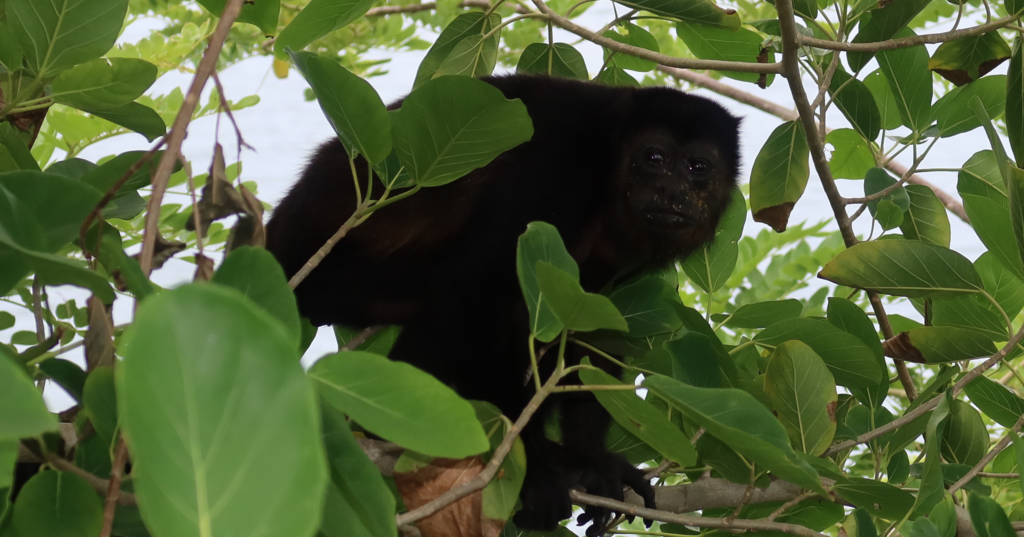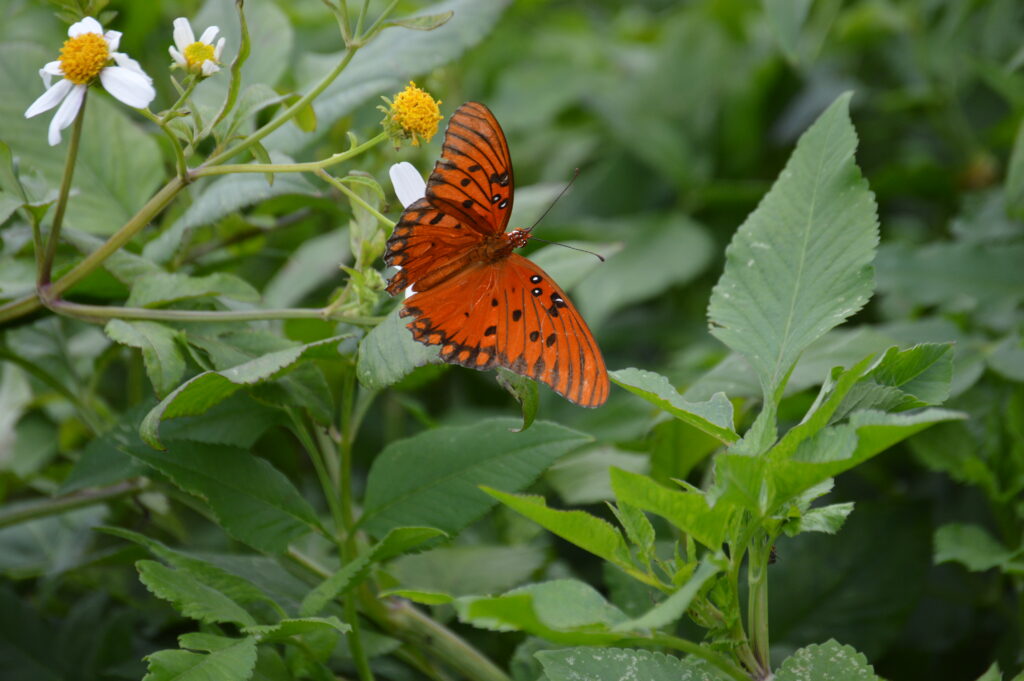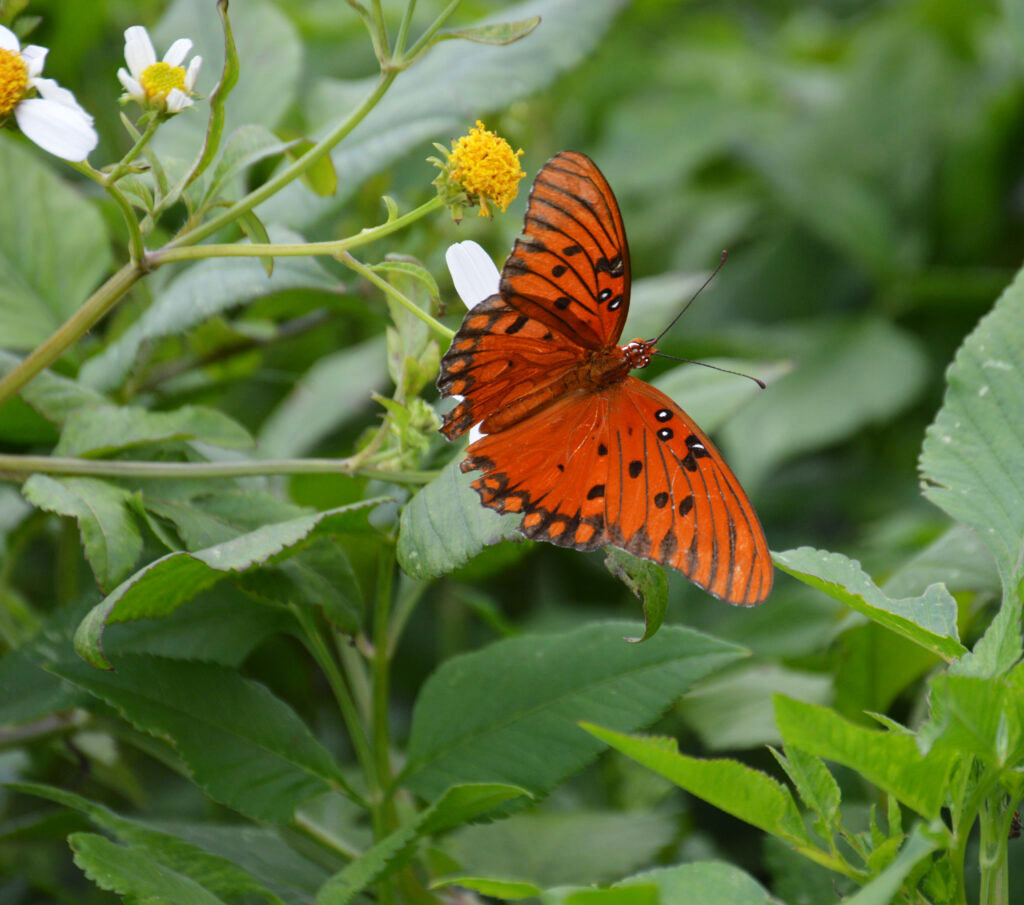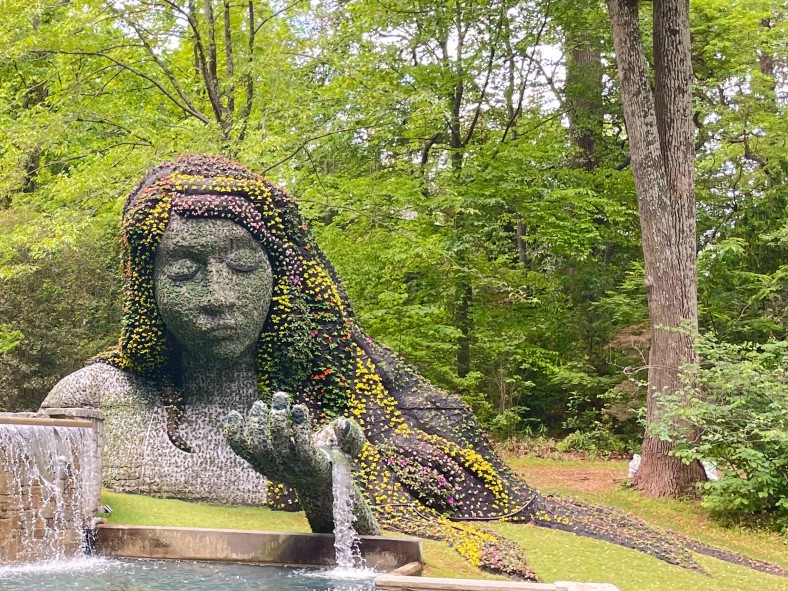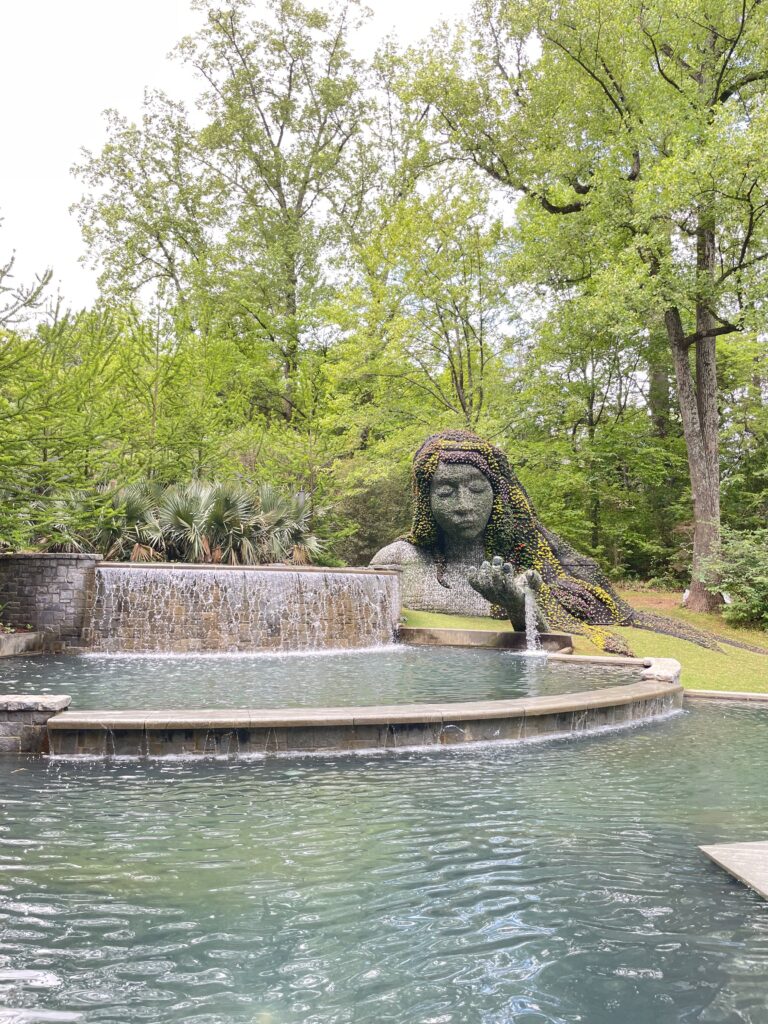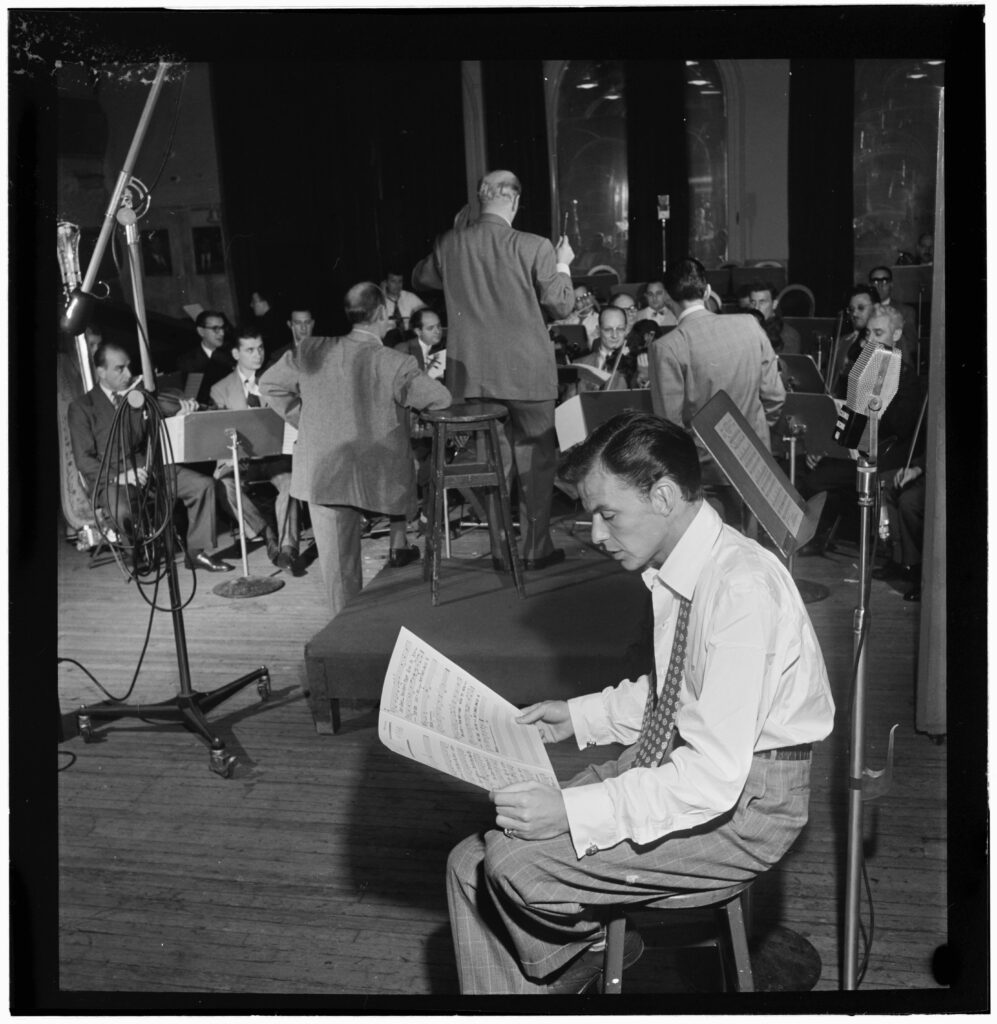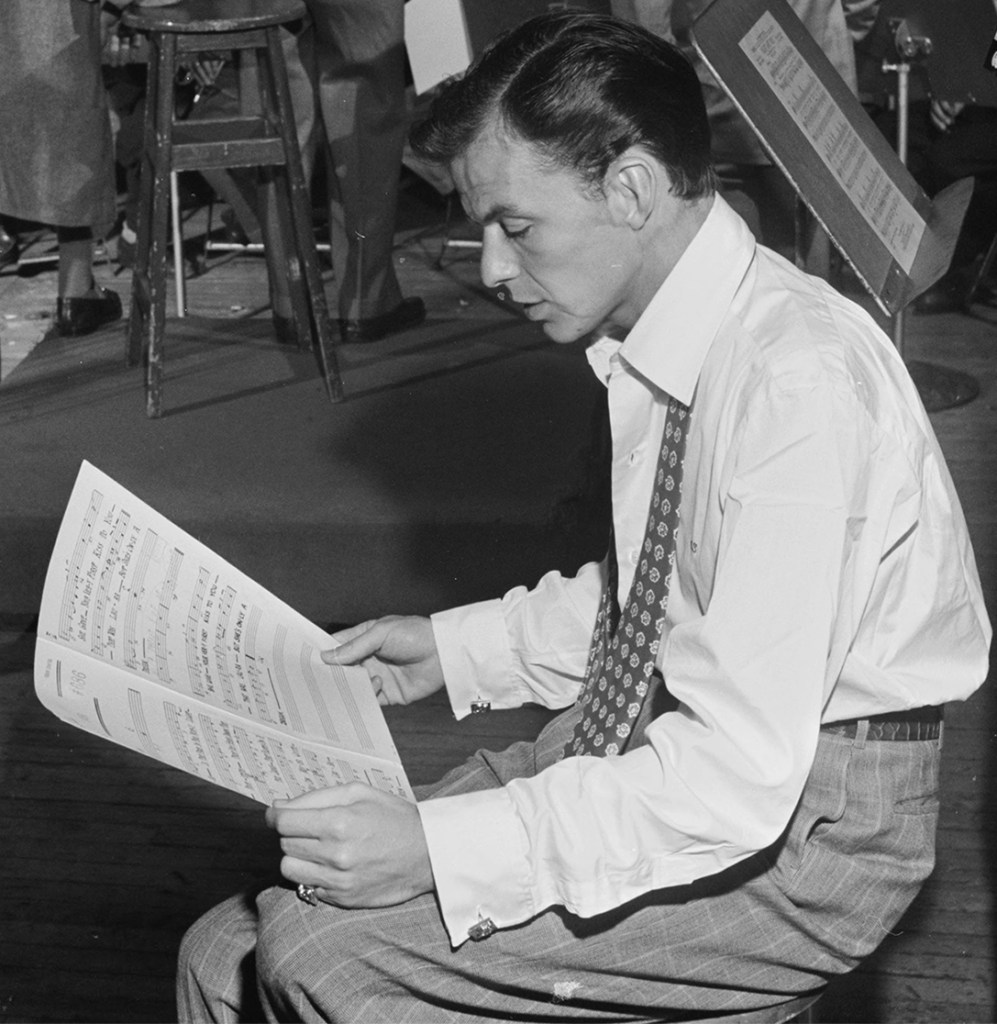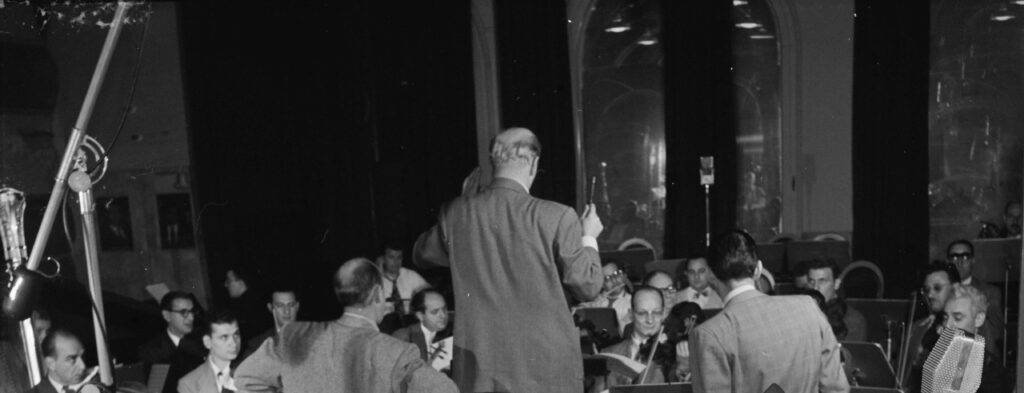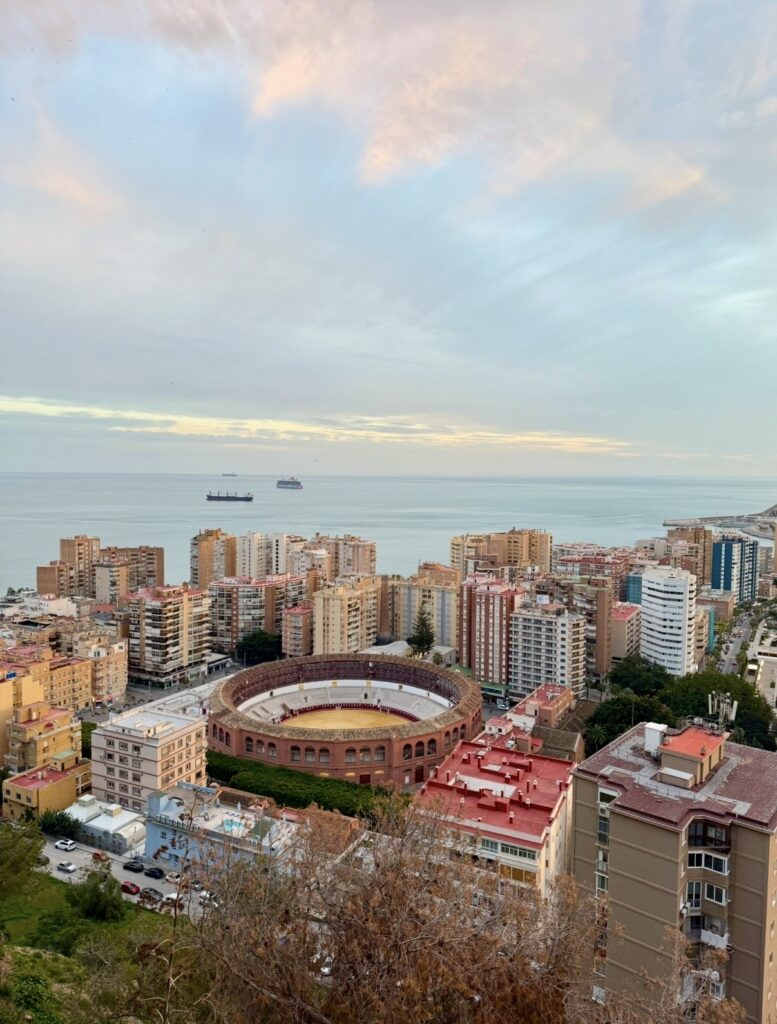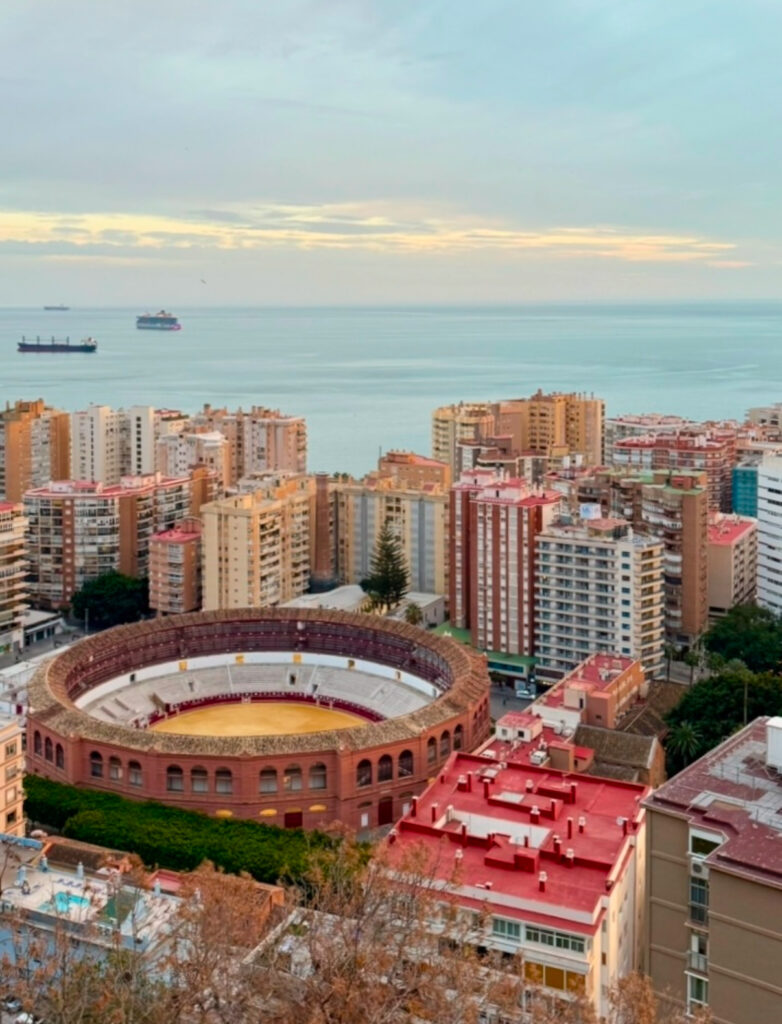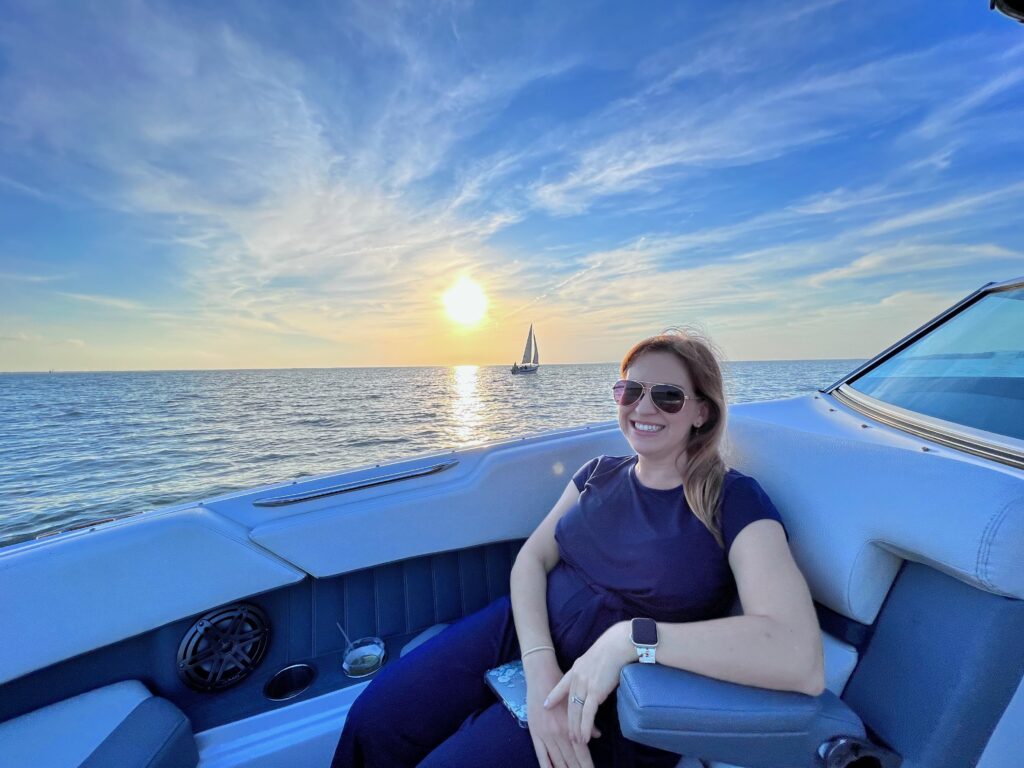
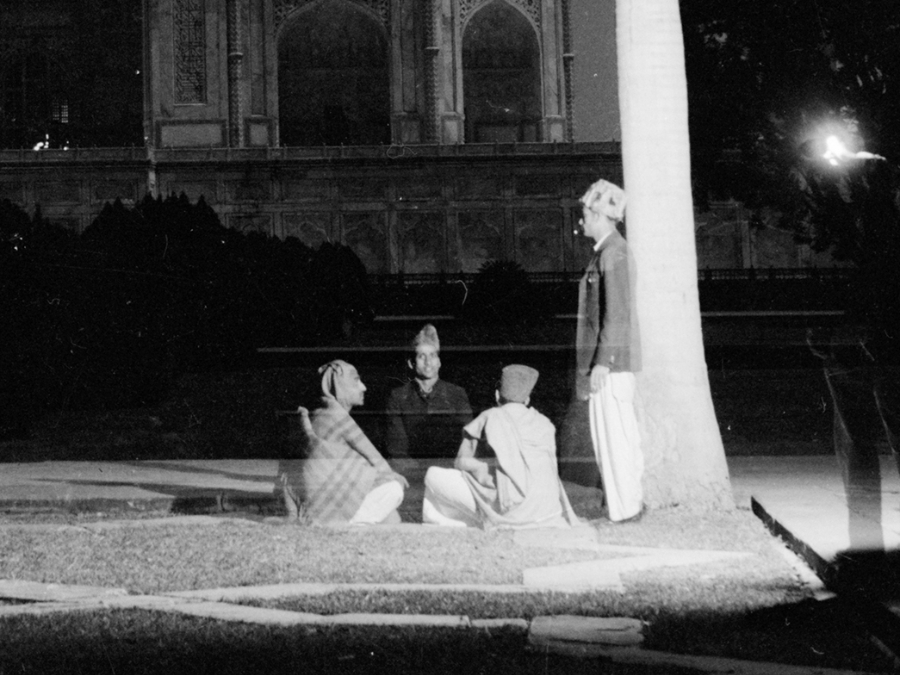
The original photo (left) is called Taj Mahal, India, 27 July 1945, by Norman Herfort, from The State Library of New South Wales. It is in the public domain.
My derivative (right) is called “Group in front of the Taj Mahal, 1945,” by Theo Thomas, licensed under CC BY-NC-SA 4.0.
When I saw the original image, I was immediately drawn to the group of people in the corner because of how brightly they were lit. Luckily, the scan of this photograph was very detailed, so I was able to zoom in and crop the scene to see them better. I consider this crop to be changing the focal point.
I love that the figures here are semi-transparent yet sharp, letting us know that they were probably sitting there for a while during a relatively long exposure. I don’t know if they were posed by the photographer or not, or if they simply saw the camera and decided to get in the shot. I don’t know if they were friends or coworkers or strangers. I just like that there is a sense of both movement–they had to have moved at some point in order to be slightly transparent–and stillness at the same time.
I thought it would be fun to try to very strongly emphasize the thirds in the picture, with the palm tree and the ground roughly aligning with horizontal and vertical thirds, and the standing man’s head falling at the top right intersection of the thirds. My goal with that was to enhance the feeling of stillness, especially with the bold, vertical line created by the tree and the standing man. I don’t know if that was necessarily a good design choice, but I sort of like how it turned out.



